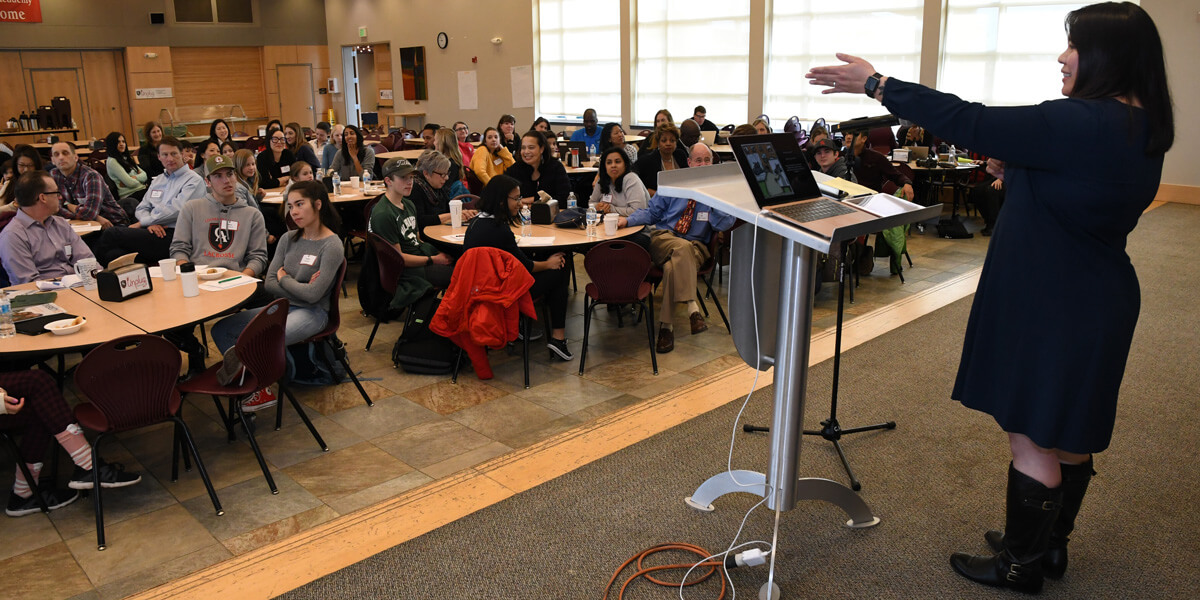At the March “Designing for Inclusion” strategy session at Colorado Academy, Head of School Dr. Mike Davis did not mince words.
“We are here to think about our future as a school and the nature of our community,” he said. “No matter the institution, every one has work to do in this arena. Today, I hope we can all be inspired to do more to honor the dignity of everyone on this campus.”
For the next three hours, faculty, staff, students, parents from Lower, Middle, and Upper Schools, and CA’s new Director of Inclusivity, Sarah Wright, followed his charge, brainstorming ways that members of the CA community can be more mindful about being inclusive in the future. As Davis put it, “How can we operate together and be our best selves?”
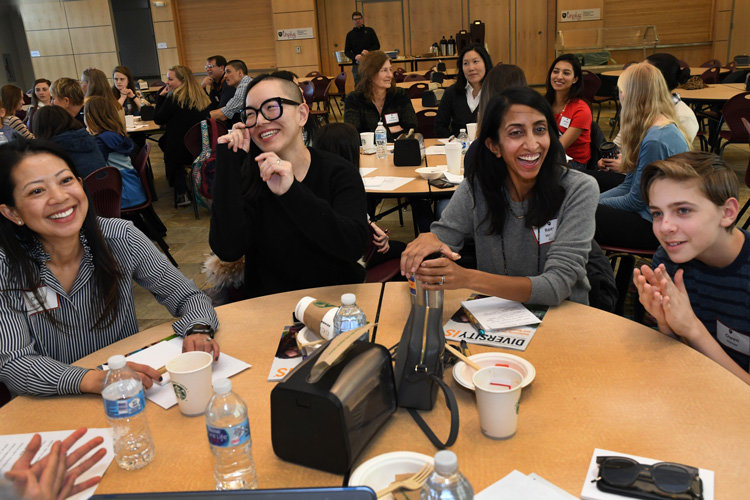
The gathering of stakeholders was smoothly guided by Dr. Liza Talusan, an educator, speaker, leader, and writer. Talusan, who has more than 22 years of experience in PreK-20 education, proved herself to be a skillful facilitator of conversations about diversity, racism, unconscious bias, privilege, and power. She praised CA for tackling tough issues and for including students and their world view in the discussion. She cautioned that creating equality in educational opportunity means continuing a long-fought battle, and embracing diversity and inclusion is hard work. There is a need to “design for inclusion.”
“The best communities engage in difficult conversations,” she said. “We can’t rely on hope and happenstance for good things to happen. To keep going in the right direction, we have to plan for goodness.”
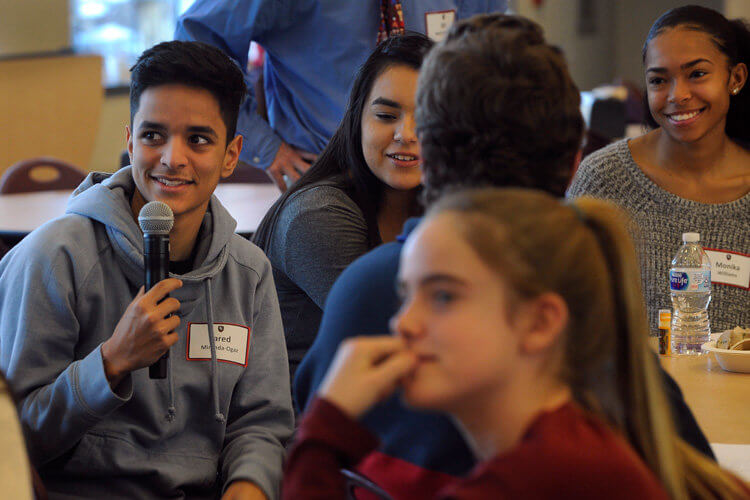
Definitions
Talusan began the morning by defining terms. What is diversity? Equity? Inclusion?
Diversity, she said, is the different categories that people might identify with, including gender, race, age, class, ethnicity, religion, political beliefs, and sexual orientation, among others.
Equity, she went on to say, is the different conditions an organization creates to assure that all people can be successful.
Finally, she added, inclusion means taking steps to create a more diverse and equitable community.
With that in mind, the group viewed a photo of a rhinoceros painting an elephant, in which the elephant had a rhinoceros tusk. In fact, all the paintings by the rhinoceros hanging in the room had large tusks. “What do you see here?” Talusan asked the group. The answers in small group discussion were enthusiastic and profound. “The rhino’s horn interferes with how he sees everything,” observed parent Nina Moore.
“The rhino’s horn is in every picture because his views never change,” added Eighth Grader Kendall Cooper. “He makes the same mistake again and again. It’s just like people who don’t see a pattern to their mistaken views because they don’t have an open mind.”
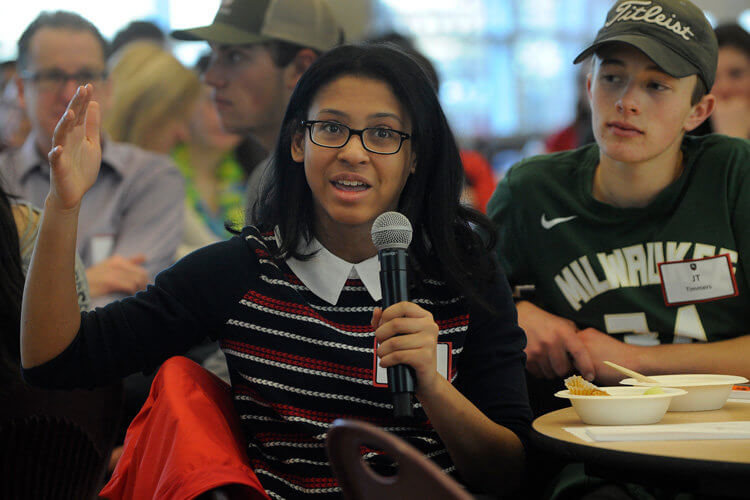
Why ‘Design for Inclusion?’
We design for inclusion, Talusan said, for three reasons. First, it helps children learn 21st century skills—innovation, agility, global understanding, emotional intelligence, and the ability to work effectively with others. Second, we design for inclusion so that we can engage in difficult conversations that stretch our learning out of our comfort zone. Finally, Talusan added, we design for inclusion because “hope is not a strategy.”
“CA is doing great things with inclusion,” she said. “We want to make sure that is your strategy, not just your hope.”
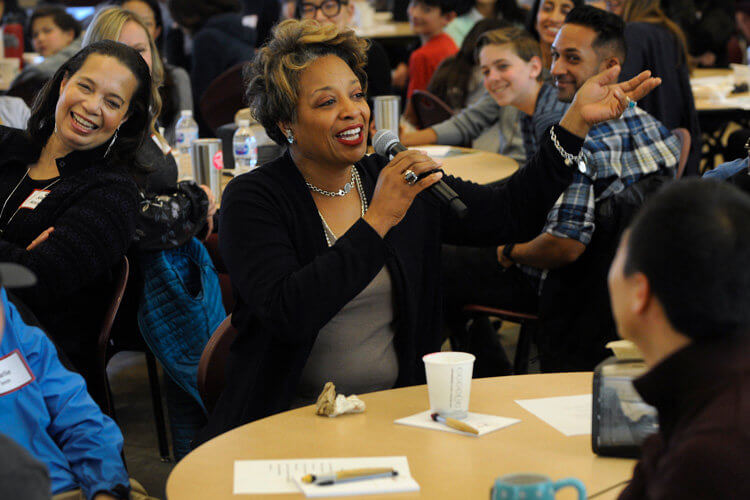
After a quick round of shifts to new tables, participants looked at another picture which illustrated how one image can serve as a “mirror” of the familiar to some people and a “window” into the unfamiliar for others. Where some people saw a mirror—familiar objects like an altar to the Virgin of Guadalupe, other people saw a window into a very different world—where multiple generations of family were living in one room. The photo did not change, but people’s perceptions—the stories they saw—differed widely.
“We can look at the same school and see something totally different,” Talusan said to the group. “Knowing that, what steps do we need to take for [designing a] successful strategy to promote inclusion?”
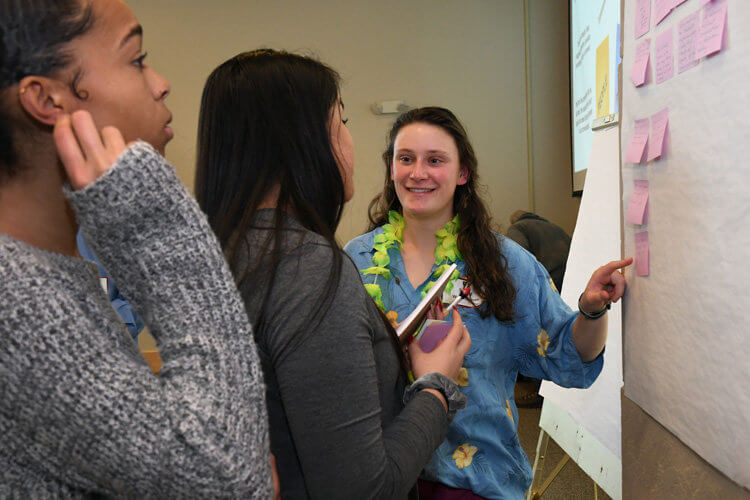
Recommendations from the group
The group ended their morning with dozens of recommendations, including comments relating to people, programs, policies, and practices at CA:
- Hire more faculty of color so students can see themselves in their teachers and mentors
- Teach students from an early age to refrain from judging others superficially
- Develop strategies to support students who do not feel like they “fit”
- Provide opportunities for difficult conversations with and among students
- Find ways to combat political divisiveness so students can discuss issues freely
- Hold more sessions like Designing for Inclusion and include more people
- Continue the school’s mission of kindness and inclusion
- Learn from mistakes
For Sarah Wright, who will assume her new position in August, the morning affirmed her decision to join CA. “It was motivating for me,” she says. “The parents, faculty, and students may have all had different experiences at CA, but they want the same thing. They want people to feel welcome and included.”
